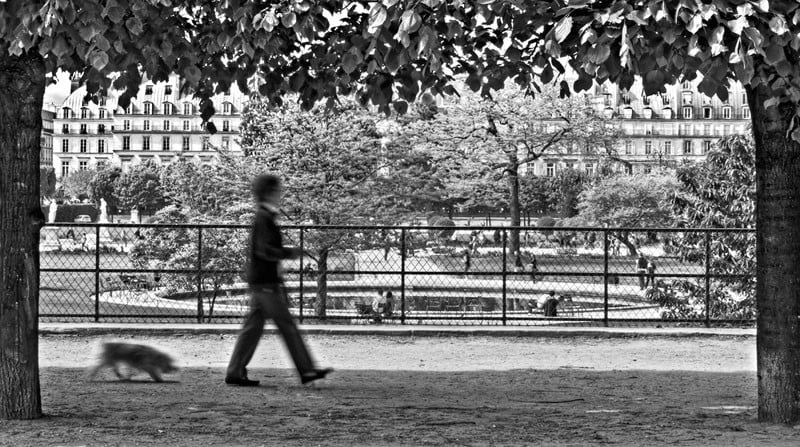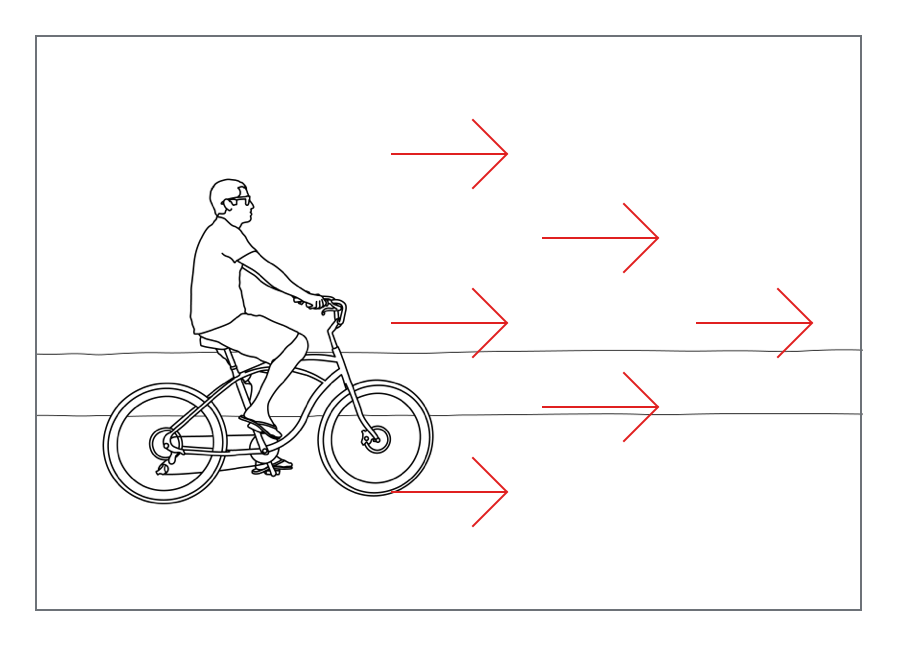The Left to Right Rule in photography suggests composing shots so movement flows from left to right. This mimics the natural reading direction, creating a sense of ease for viewers.
Harnessing the Left to Right Rule photography technique can elevate the visual appeal of your images. This compositional guideline capitalizes on the Western world’s reading habits, where eyes naturally move from the left side of a frame to the right.
It’s a subtle yet powerful tool for photographers aiming to create dynamic images that resonate with viewers. Employing this rule can guide the viewer’s eye through the scene, often making the photograph more engaging and easier to understand. By aligning the motion or the subjects’ gaze from left to right, photographers can produce works that are not only aesthetically pleasing but also psychologically comfortable for their audience. This principle is particularly significant in storytelling within an image, as it can influence the way the story is perceived and absorbed.

Credit: petapixel.com
The Left To Right Rule In Visual Storytelling
Visual storytelling guides the viewer’s eyes. The Left to Right Rule helps. It shapes how we view images. Understanding this rule is key for photographers and artists.
Historical Roots Of Left-to-right Reading
- Writing systems often start on the left.
- In the West, left-to-right is the norm.
- This reading pattern dates back to ancient times.
Ancient scripts, like Latin and Greek, influence us. Our eyes naturally start from the left. This habit is deep-rooted in our culture.
Psychological Impact Of Directional Flow On Perception
Direction affects how we perceive stories in photos. Left-to-right movement feels positive and natural to many viewers. It aligns with our reading habits.
| Direction | Perception |
|---|---|
| Left to Right | Progress, Comfort |
| Right to Left | Tension, Challenge |
Images that follow this flow lead our eyes easily. They help tell the story smoothly. Photographers use this to control the narrative.
This understanding enhances visual impact. Left to right directs viewers effortlessly. It is essential in creating compelling compositions.
Basics Of The Left To Right Rule
Understanding the Basics of the Left to Right Rule is crucial in photography. This simple concept can transform how viewers engage with images. Let’s delve into the details and unravel the secrets of this powerful compositional tool.
Defining The Left To Right Rule In Photography
In visual art, the Left to Right Rule refers to the natural tendency. People look at images starting from the left, moving to the right. This pattern mirrors the way most of us read text. In photography, the left to right rule suggests placing the main subject slightly off-center. This is towards the left for a more dynamic composition. The following elements illustrate this rule:
- Leading Lines: Use them to guide the viewer’s eye from left to right.
- Subject Placement: Position subjects on the left to establish focus.
- Negative Space: Employ the space on the right to create balance.
Why Directionality Matters In Image Composition
Every element in a photograph informs the story it tells. Directionality is no exception. An image with strong left to right flow impacts the following:
| Element of Composition | Impact of Left to Right Directionality |
|---|---|
| Visual Comfort | Creates a natural viewing experience. |
| Attention Control | Guides the viewer to important image areas. |
| Narrative Flow | Enhances storytelling within the frame. |
| Emotional Response | Directs the emotional impact of the image. |
Understanding this rule can help photographers convey their message effectively. It leads to a memorable impression on the audience.
Incorporating The Rule In Different Photography Genres
Photographers love the Left to Right Rule for its visual impact. This rule guides viewers through a picture, like reading a book. It is a powerful tool across different photography genres.
Applying The Rule In Landscape Photography
Landscape photography is about capturing vast spaces. By applying the Left to Right Rule, compositions gain a natural flow. Start with these steps:
- Find a focal point on the left that leads to the rest of the scene.
- Use leading lines like roads or rivers to guide the eye.
- Snap shots during golden hours when shadows create depth.
Remember, a well-composed landscape photo tells a story. The Left to Right Rule helps viewers navigate that story effortlessly.
Directional Flow In Portrait And Street Photography
Portraits and street scenes come alive with direction. Convey emotion and narrative with the Left to Right Rule.
| Technique | Effect |
|---|---|
| Eye Gaze | Subjects looking left create anticipation. |
| Movement | Capture walks or gestures starting from the left. |
| Environment | Position subjects on the left, with space to ‘move into’ on the right. |
With each click, think about the story’s direction. Allow viewers to wander through the scene, starting from the left.

Credit: photobuddies.co.in
Breaking The Rule For Creative Effect
The Left to Right Rule in photography states that subjects should move from left to right in an image. This mimics the natural way the eye reads text in most Western cultures. Yet, creative photography often involves bending the rules. Let’s explore how breaking this rule can enhance visual storytelling.
Instances Where Right To Left Works Better
Taking the path less traveled can lead to compelling imagery. Consider the following scenarios where a right to left orientation truly stands out:
- Cultural Context: In cultures where text is read right to left, adjusting the flow suits the local reading dynamics.
- Narrative Tension: A subject moving against the expected direction creates a sense of unease or anticipation.
- Visual Surprise: Flipping the motion reverses the audience’s expectations, offering a fresh perspective.
Balancing Composition When Defying The Rule
How do we maintain harmony in our shots while flipping the script? Here are some vital tips:
| Technique | Benefit |
|---|---|
| Use Leading Lines | Directs viewers’ eyes through the frame, maintaining flow. |
| Negative Space | Provides breathing room, guiding focus to the main subject. |
| Rule of Thirds | Grounds the subject within the frame for a balanced composition. |
Balance can be achieved through thoughtful placement of visual elements, preserving a sense of direction even as the rule is broken.
Tips And Techniques For Mastering Directional Flow
Creating a sense of direction in photographs keeps viewers engaged. Directional flow leads the eye through an image. This creates a visual journey. Let’s explore tips for mastering this dynamic element in photography.
Using Leading Lines To Guide The Viewer’s Eye
Leading lines are powerful tools in photography. They draw the eye deeper into your image. Here’s how to use them effectively:
- Look for Natural Lines: Find paths, fences, or even shadows.
- Position the Lines: Place them leading from the image’s edge towards the main subject.
- Use Diagonals: Diagonal lines create dynamism and depth.
- Consider the Depth of Field: Keep leading lines sharp with a small aperture.
Post-processing Tricks To Enhance Directional Movement
After capturing your image, enhance the flow in post-processing. Here is what you can do:
- Brighten the Path: Use a brush tool to lighten leading lines.
- Increase Contrast: Contrast directs attention to the flow of lines.
- Guide With Vignettes: Darken corners to focus on the central flow.
- Dodge and Burn: Dodging and burning can emphasize movement.
Invest time in refining these techniques. This will ensure your images lead viewers on an unforgettable visual journey.

Credit: photobuddies.co.in
Analyzing The Impact Of Left To Right Rule In Iconic Photographs
Visual storytelling shapes our perception, and the left to right rule in photography stands as a subtle guide. The Western world reads from left to right. This habit influences the way we view images. Even in photographs, we tend to scan scenes in the same direction. Understanding this sweeping motion unveils the power behind iconic shots. Let’s dive into the impact of this rule through analyses and critiques.
Case Studies Of Renowned Photographs
Iconic photographs offer visual narratives that engage viewers. A closer look at these snapshots reveals the left to right rule at play. This section highlights how this unwritten guideline aids in conveying powerful stories through imagery. Below are some of the most remarkable case studies:
- “V-J Day in Times Square” by Alfred Eisenstaedt: The sailor’s movement draws the eye from left, following his joyous embrace to the right.
- “The Migrant Mother” by Dorothea Lange: Despair seems to move from left to right across the image, mirroring the journey of the subject.
- “Tank Man” in Tiananmen Square: The tanks enter from the left, leading to the confrontation with the lone figure standing on the right.
Each photograph employs the left to right rule to enhance the narrative force of the scene. They direct the viewer’s gaze, crafting a journey through the frame.
Critiques On How Directional Flow Alters Storytelling
Directional flow acts as a silent storyteller in photography, and critiques highlight its impact.
| Photograph | Impact of Directional Flow |
|---|---|
| “The Falling Man” by Richard Drew | Descent from left to right, enhancing the tragedy’s inevitability. |
| “Muhammad Ali vs. Sonny Liston” by Neil Leifer | Ali’s left-to-right stance suggests forward momentum and victory. |
| “Earthrise” by William Anders, NASA | The Earth’s left-to-right emergence symbolizes hope and progress. |
These critiques help us grasp how the flow can add depth to the interpretation of a photo. They show that the left to right rule isn’t merely a guideline. It’s an essential aspect of storytelling in photography.
Frequently Asked Questions On Left To Right Rule Photography
What Is The Left To Right Rule In Photography?
The Left to Right Rule in photography is a compositional guideline suggesting that movement in a photo should go from the left side of the frame to the right. This aligns with Western reading patterns, creating a natural flow for viewers to follow within an image.
How Does The Left To Right Rule Enhance Photos?
Using the Left to Right Rule enhances photos by creating a sense of motion and ease of viewing. It helps guide the viewer’s eyes through the scene, often resulting in more visually appealing and dynamic images that resonate with viewers’ natural habits.
Can The Left To Right Rule Be Broken In Photography?
Yes, the Left to Right Rule can be broken. While it’s a useful guideline, photographers can create tension, interest, or convey cultural narratives by intentionally composing shots that counter this typical movement pattern.
When Should You Use The Left To Right Rule?
The Left to Right Rule should be used when you want to create images that feel harmonious and easy to engage with, especially when depicting movement or action that you want to appear smooth and natural to the viewer.
In Conclusion:
Embracing the left-to-right rule in photography can transform your visual storytelling. It guides viewers through your image, fostering a natural reading flow. Keep experimenting with this technique; your portfolio will thank you. As your skills sharpen, watch your compositions come alive, captivating your audience every time.


